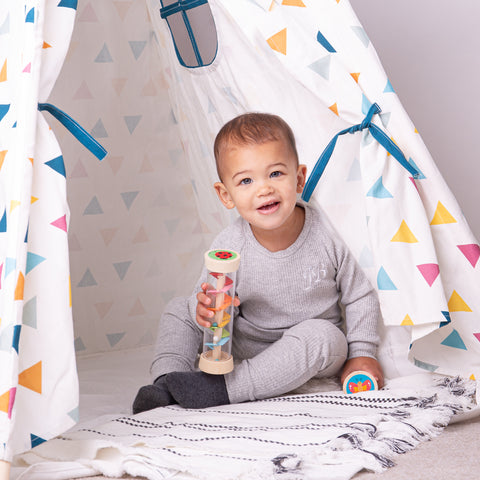
How To Make A Sensory Box
Enter the world of sensory boxes! This simple idea has become a trendy parenting solution, offering a delightful way to keep little ones engaged both at home and while on the move.
Exploring Sensory Box Ideas
Curious to learn more about the benefits of sensory toys? Keep reading to uncover the ins and outs of sensory boxes and how to craft one for your inquisitive child.
What is a sensory box?
Similar to sensory bins but in a more compact and portable form, sensory boxes involve a small container filled with sensory toys and/or homemade items designed to stimulate the senses.

Crafting Your Own Sensory Box
Creating a sensory box is a breeze, adding to its appeal! Follow these three simple steps to craft a homemade sensory box:
- Select an old cardboard box (a shoebox is ideal) and line it with colourful tissue paper.
- Collect a variety of toys or household items that appeal to your child's senses, focusing on sight, sound, and touch (suggestions below).
- Place them inside the box for a delightful sensory play experience!
Recommended Age Range for Sensory Boxes
Sensory boxes are most suitable for babies and toddlers, typically ranging from around 4 months to 3-5 years old. They also make thoughtful gifts for baby showers and birthdays.
Choosing Items for Your Sensory Box
Find toys and objects that encourage exploration of different textures, sounds, colours, and shapes. Here are some age-specific sensory box ideas to spark your creativity:
Sensory Box for Babies
As your little one explores the contents of their baby sensory box, describe the objects' appearance and texture, fostering brain development, language acquisition, and memory.
Sensory Toys for Babies:

DIY Baby Sensory Toys:
- Crumpled paper
- Ribbons
- Bath sponge
- DIY sensory bottle
- Tin foil tube
- Homemade rice rattle
Benefits of a Sensory Box
A simple sensory box introduces babies and toddlers to a plethora of new experiences, including sights, sounds, textures, smells, and even tastes. They encourage sensory play sessions, fostering learning through curiosity and creative exploration. Engaging with a sensory box also promotes mindfulness and provides a calm, screen-free form of entertainment while enhancing fine motor skills, hand-eye coordination, and cognitive development.
